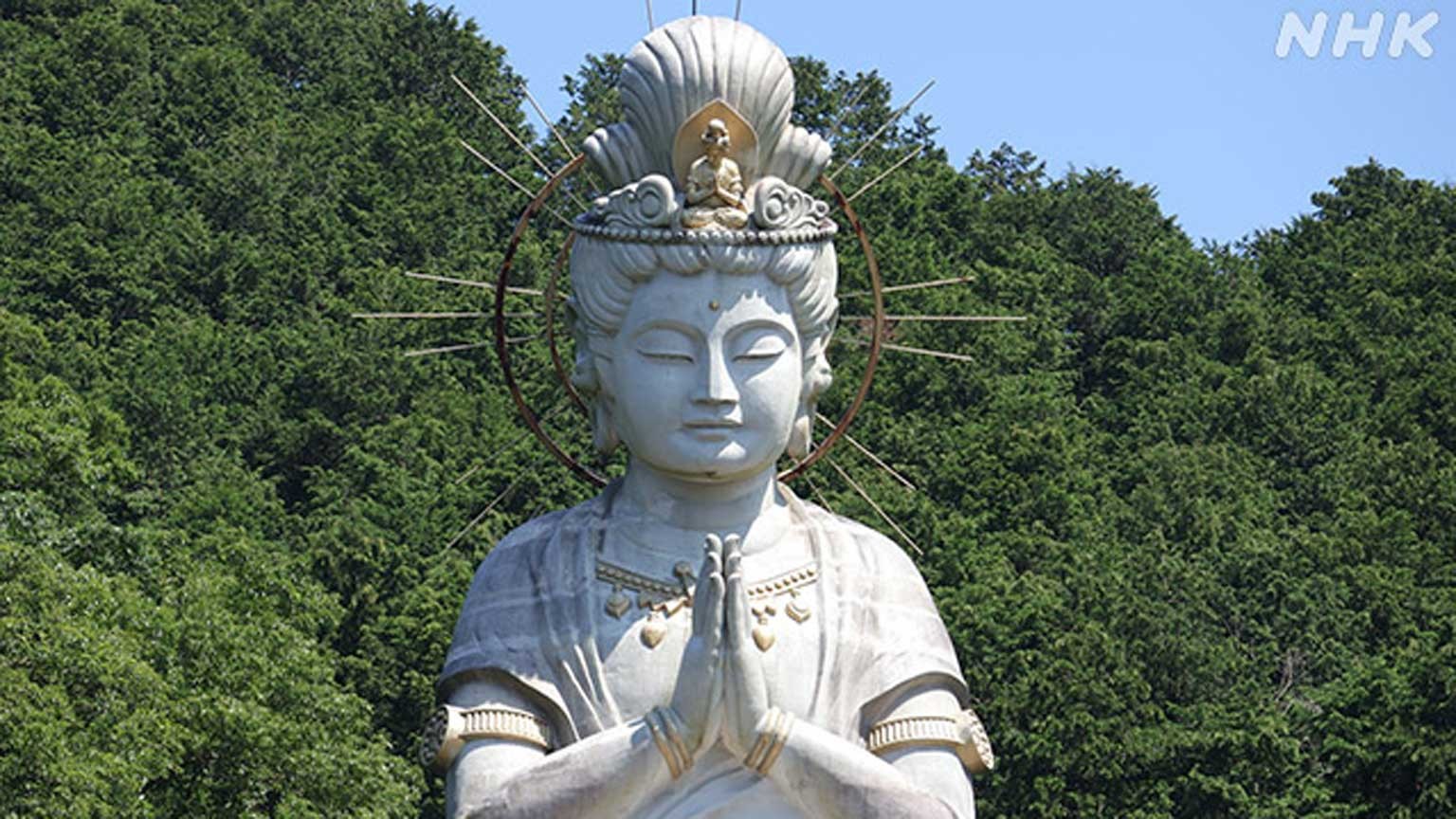Golden Kannon theme park
A 73-meter Kannon statue overlooks the hot-spring resort city of Kaga in Ishikawa Prefecture.
The reinforced concrete structure, named Kaga Dai-Kannon, was built in 1987 by a local real estate magnate. The infant she holds is said to be 15 meters long, the same height as the famous Great Buddha statue at Todaiji Temple in the ancient capital of Nara.
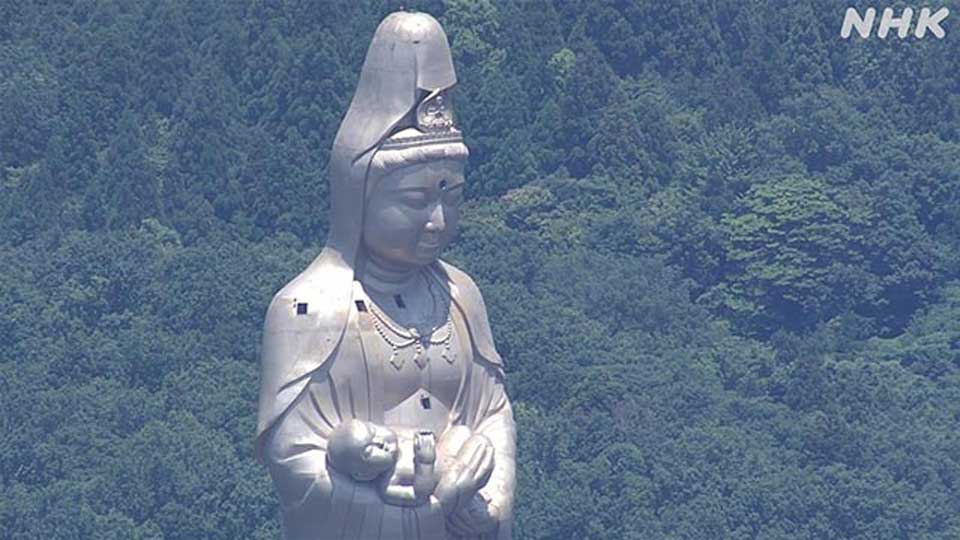
Along with the golden statue, a hot-springs facility, an amusement park and an art museum opened in the area. The attractions initially brought many visitors each year. But 36 years later, nothing remains of the past glory.
The man behind the venture, Shimanaka Toshio, told NHK in 1987: "It was my longtime dream to build this Kannon statue. It insisted that it be golden and have an air of mystery."
The man behind the venture hoped to attract one million tourists, saying of the deity represented by the statue: "I hope many people will be happy with the blessings."
But blessings turned to bankruptcy for Shimanaka's company after the bubble economy burst in the early 1990s. Since then the statue has fallen into disrepair as the land it stands on repeatedly changed ownership.
Aviation safety risk
Now, the statue poses a safety problem. Japan's building code requires structures that are 60 meters or higher to be fitted with aviation obstruction lights. It has been some time since the Kaga Dai-Kannon light was operational.
According to the Osaka Civil Aviation Bureau of the Ministry of Land, Infrastructure, Transport and Tourism, there is no immediate danger, but the situation is a legal violation.
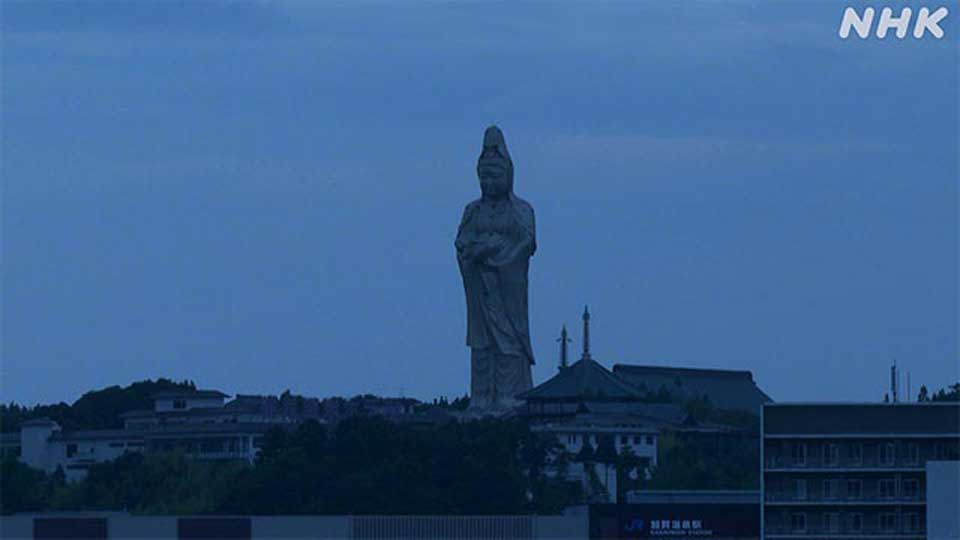
A representative of a Kyoto real estate company that has owned the statue and surrounding land since February of last year says the light was working when the company took possession. The spokesperson suggested the light may have been damaged by a lightning strike and says the firm is looking to fix it.
A proliferation of Kannon
A survey by NHK and Tsugawa Yasuo, a professor emeritus at Takasaki Keizai University who specializes in landmark research, identified at least 15 Kannon statues taller than 25 meters in Japan. The figure includes two that have already been dismantled.
Eight of them were built between the 1980s and the mid-1990s.
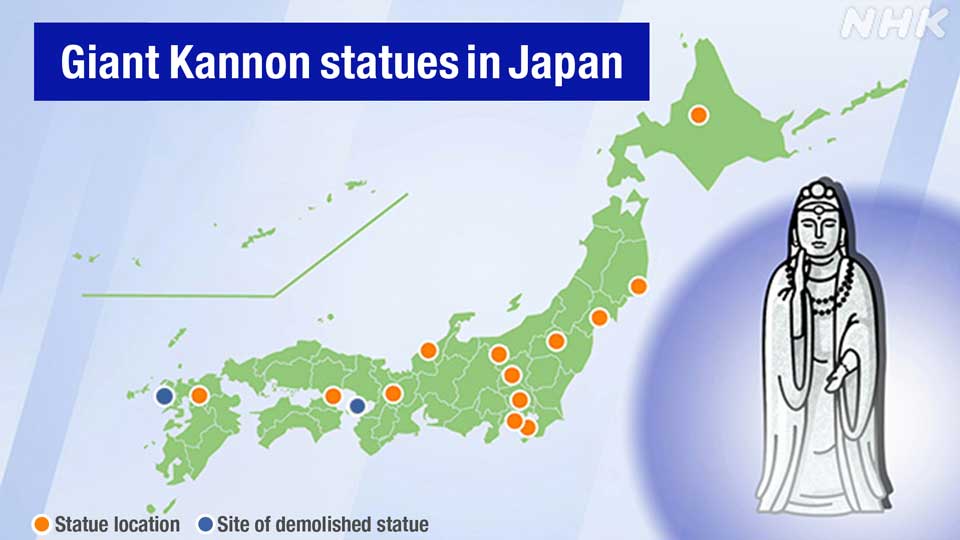
Tsugawa says the statues built during the bubble era were less about religious significance – and more focused on attracting tourists.
"At first, giant Kannon statues were built to console the souls of the war dead and promote faith," notes Tsugawa. "But those built by businesspeople during the 1980s were about being bigger and taller. They were passionate about the construction itself, and didn't really think about the future."
Tsugawa says statues are expensive to maintain and to dismantle. Unless they have a strong spiritual meaning, local communities' connections with the landmarks will eventually fade.
"That makes it difficult to create momentum to preserve the statues, or work together to restore them," Tsugawa explains.
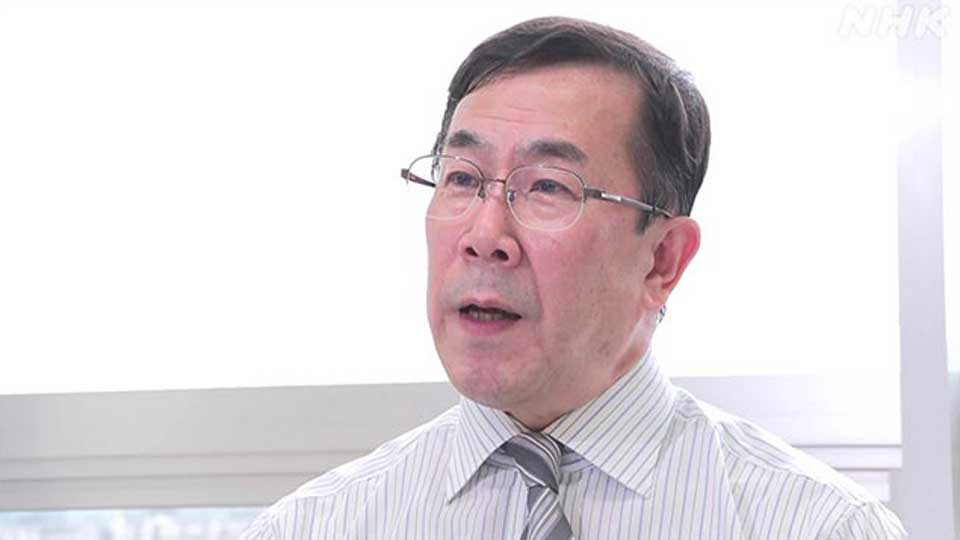
Taxpayers fund a costly demolition
The World Peace Dai-Kannon statue was built by a real estate tycoon on Awaji Island in Hyogo Prefecture, western Japan, in 1982. It was 100 meters tall, including the pedestal upon which it stood.
After he and his wife died, the structure and its facilities were closed up and abandoned. The statue became a hazard as its interior ceiling and outer layers fell apart.
The government took action in 2020 in a complicated process. The Kinki Local Finance Bureau nationalized the statue based on a legal provision for assets that have no heirs. The bureau then demolished and removed the statue at a cost of around 900 million yen.
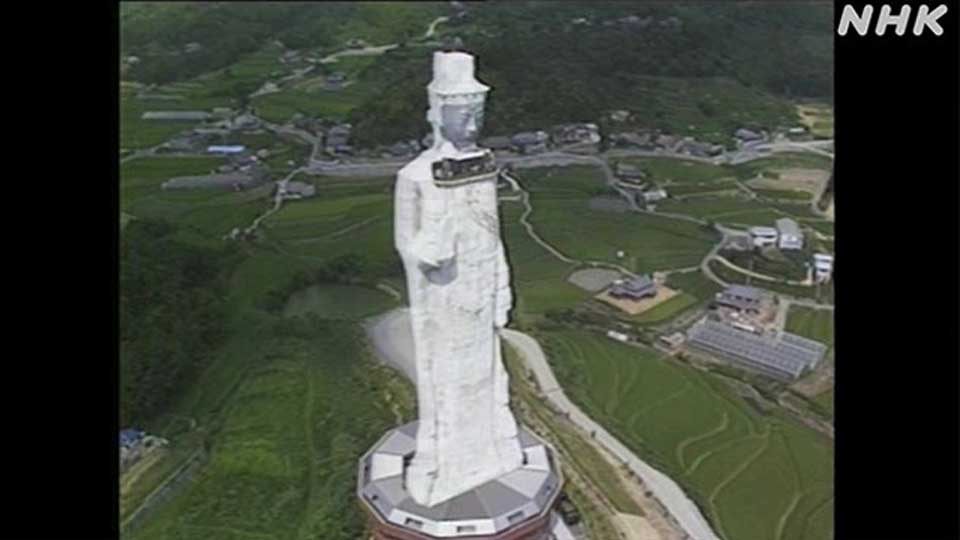
Taking care of a beloved statue
In Takasaki City, Gunma Prefecture, a 41-meter-tall statue is cherished by residents.
The Takasaki Byakue Dai-Kannon was built in 1936 by a local businessman to remember those who lost their lives in the Sino-Japanese War and the Russo-Japanese War, as well as to promote the region. It was later donated to the city along with the surrounding land. A Shingon Buddhism temple, Jigenin, has been taking care of the statue since around 1940.
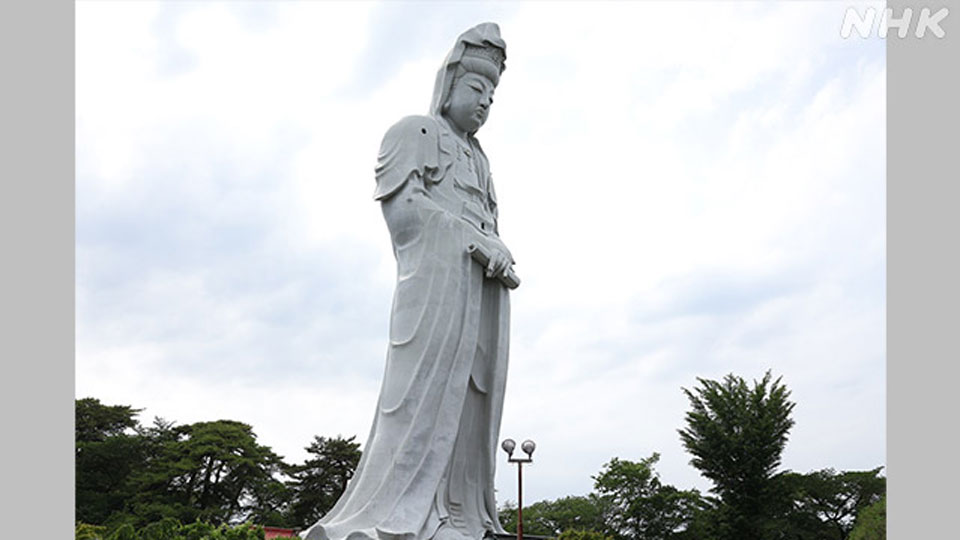
Inside the statue, a staircase takes visitors up to its shoulder height, where visitors can enjoy a view of the Kanto Plain.
Large-scale renovations have been completed, including repairs to cracked walls and repainting. The statue is in excellent condition nearly 90 years after it was first constructed.
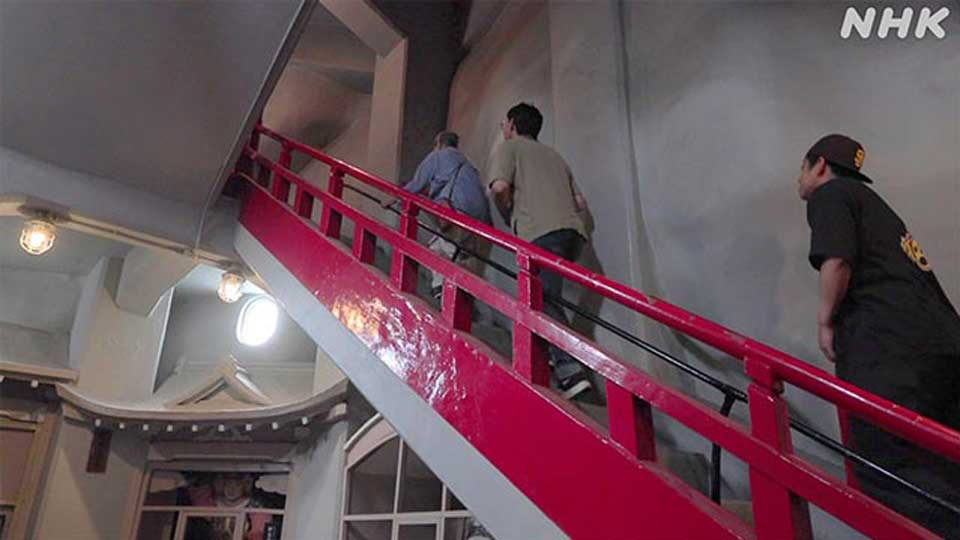
Taking responsibility
Japan's giant Kannon statues come in various shapes and styles. Some have strong links to religious faith, some are loved by residents, and others are abandoned.
Experts say there are no immediate problems if they are carefully maintained and managed. But as the structures age, and if local residents want to keep them, they require administrative oversight.
As demonstrated on Awaji Island, demolition of abandoned statues is a costly exercise.
Governments and local municipalities are finding it difficult to deal with those in disrepair, as they are connected to religion and people's faith. As long as a giant Kannon statue stands in place, it comes with responsibility and challenges for the communities around it.
